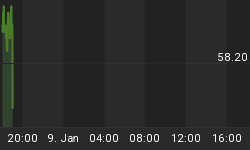There's a great deal of chatter in the press and online about the tremendous US$1-trillion-dollar mineral "discovery" in Afghanistan headlined by The New York Times recently. Most of the discussion seems to center on whether or not this is really news and whether or not the NYT was played by the powers that be for purposes of their own. Few, if any, people seem to be questioning the value of the so-called discovery itself. The US$1-trillion-dollar figure, at best, cannot be anything more than the wildest of hopeful guesses.
One does not have to be a geologist or an engineer to understand why. When geologists find outcropping mineralization, or other signs that an economic deposit of minerals may be present, that is not called a discovery. Even if the signs come from the latest scientific equipment flown over the country, as the U.S. government appears to have used, the result is still just an anomaly: a hopeful indication of where to look. And anomalies are like opinions: Everybody has one.
Once an anomaly is identified, it takes extensive and very expensive field work to determine the best locations for drilling holes in the ground, which you have to do to calculate a volume of mineralized rock, from which you can estimate the metal contained. It usually takes at least a year, and often several, to identify targets for drilling. And drilling off a deposit of any significant size takes several more years, usually after many false starts and setbacks, because you can't see through rock to know where the goods are.
But even after you drill off a deposit, and know how big it is, how deep it is, and roughly what's in it, you still don't know what it's worth. For that, you have to conduct extensive testing on the mineralized material, not just to quantify the metals or other desirable minerals within but also to see if there are contaminants, or other elements present that can complicate, or even make impossible the economic recovery of the valuable mineral.
In short, until you know how much it would cost to mine and process any sort of mineralized material into a saleable product, like gold bars, copper concentrate, etc., you cannot say what it's worth. Even a huge deposit of gold may be completely worthless if the grade is low and there's lots of carbon that would mess up the gold recovery.
Now, back to Afghanistan. A "small team of Pentagon officials and American geologists" cannot possibly have drilled off these deposits, let alone done the engineering required to value them. At very best, they've spotted some outcrops and taken some samples. This is not a discovery -- no serious exploration geologist would call anything a discovery until enough holes have been drilled into it to outline a significant volume of potentially economic material.
What we have here is a regional survey that may or may not lead to significant discoveries.
Where do they get the trillion-dollar figure? We can only guess but given their own description, they cannot have done the work necessary to generate any reasonable estimate. It's worth pointing out that the vast majority of mineral outcroppings and other anomalies never lead to economic discoveries, much less mines. Even a very rich vein sticking right out on surface can turn out to be the last dregs of a system that has been eroded away, leaving nothing but a tease behind. For gold, the odds of an anomaly leading to an economic discovery are often cited as being on the order of 300 to one, against.
No responsible geologist would circulate a valuation figure at this stage of the process in Afghanistan. In fact, if a public company put out a press release like this story in the NYT, the exchange would likely reprimand it severely and require a retraction.
Now, the soldier quoted admits that "There are a lot of ifs," but that does not excuse putting out the US$1-trillion figure, a number that cannot be reasonably supported at this point.
Note that this doesn't mean the minerals are not there -- Afghanistan has, for obvious reasons, not seen any modern exploration, or even antiquated exploration, for decades. It is, in all likelihood, a terrific place to look for minerals. But the government's story sounds like the sort of PR stunt put out by Pink Sheet scammers.
It will take time for any real discoveries to be made, especially given the time required to draft a workable mining law and for physical security to be established in the country. It would be a great benefit to the people of Afghanistan, and of the world, if this would happen
Separating sound opportunities from all of the hype is something Senior Editor, Louis James, successfully does each month in Casey's International Speculator. By putting his boots on the ground and kicking rocks in the world's most remote locations, meeting geologists and company management on-site, and personally inspecting the find, he continually brings winning picks to his subscribers. In 2009 every recommendation he made was a winner, with an average portfolio gain of 80.8%. And so far, the 2010 portfolio looks poised to smash last year's record. If you'd like to learn how you can profit from the natural resource and junior exploration companies Louis is recommending right now in Casey's International Speculator.















